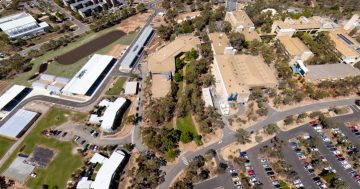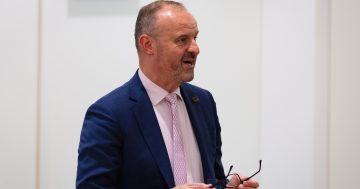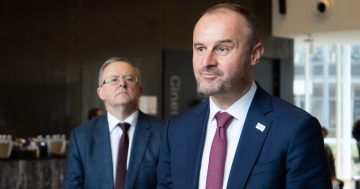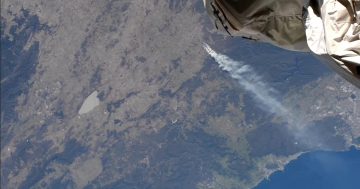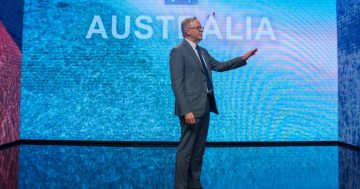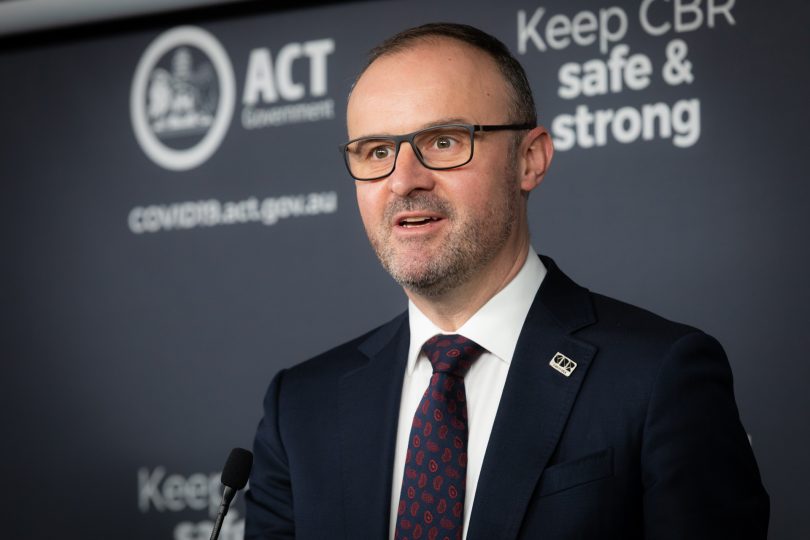
Chief Minister Andrew Barr: “Canberra is uniquely placed to meet the need for a better work-life balance.” Photo: Michelle Kroll.
Canberra will play to its strengths as an accessible, liveable and innovative city to attract new investment and talent over the next four years, Chief Minister Andrew Barr has told the Committee for Economic Development of Australia (CEDA).
Mr Barr launched the ACT’s Economic Development Priorities in Wednesday’s address to CEDA, stressing Canberra’s work-life balance and the national capital as an easy place to do business.
“Our mission is to work with willing partners across the community to ensure Canberra is prepared for new challenges, and able to grasp the opportunities that will come from the next phase of our economic development,” he said.
After more than two years of pandemic and economic upset, Mr Barr expressed cautious optimism about the future and outlined three key missions – maintaining Canberra’s lifestyle as an asset, developing a zero-emissions and sustainable city, and prioritising further knowledge-based economic growth.
The ‘CBR Switched On’ strategy will also be driven by transformative projects such as the Big Canberra Battery and the Canberra Airport freight hub.
Mr Barr said the goal was for Canberra to be a city that gave back time and prioritised wellbeing and liveability.
“Across the world, COVID-19 has forced people to reassess how they want to live,” he said. “Canberra is uniquely placed to meet the need for a better work-life balance.
“We will achieve this through better design, implementation and access to secure digital services, as well as improvements in urban planning and transport links.”
Mr Barr said the government would push beyond its commitment to net zero-emissions by 2045 and the already decarbonised electricity grid to deliver a swag of objectives.
These include the Big Canberra Battery; boosting the energy-efficiency of buildings and homes to bring down energy bills; the phasing out of fossil-fuel gas; and driving down transport emissions, including swelling the number of zero-emissions vehicles.
“By meeting our targets and building on our status as an early mover on climate action, we can attract new talent, ideas and investment to Canberra,” he said.
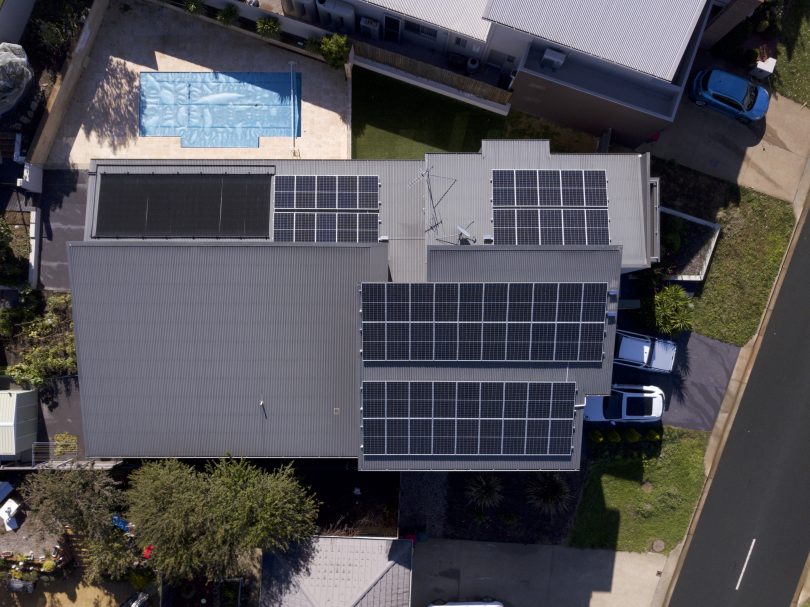
The government sees a decarbonised Canberra as an economic model of the future. Photo: Mondiaux Solar.
Mr Barr said the Big Battery, incentives to remove gas from homes, boosting household energy efficiency and reducing transport emissions gave Canberra an opportunity to pilot world-first decarbonised suburbs.
“We will show the world that decarbonisation can be achieved while creating jobs, growing our economy and saving money.”
He said the government wanted to position Canberra as a city where innovation, creativity and entrepreneurship were encouraged and celebrated.
Over the next four years it will formalise the city’s innovation precincts based around tertiary education and research institutions, and further establish Canberra as a city-wide hub for developing and trialling new ideas such as vehicle-to-grid solutions and virtual power plants.
“We will continue to support and encourage our entrepreneurial ecosystems with relationships between higher education and research sectors, the business community and the government.”
The government will also establish an investment facilitation service and provide venture capital to small businesses.
It will prioritise investment that provides a return to the community by enhancing liveability and delivering environmental and social benefits.
Mr Barr said aviation was crucial to Canberra’s tourism economy getting back to a visitor spend of $2.5 billion and connecting the region to domestic and global markets
The government will continue working with a recovering Canberra Airport to secure direct international services and re-establish the national capital as a global aviation hub.
There will also be coordinated investment in the road networks surrounding the airport to enable efficient movement of goods; increase access to markets; and allow private sector investment in supply chain and logistics infrastructure.
“Cross-border collaboration will be important, with this key transport hub providing a critical economic growth connection to our diverse region.”
The government will also continue working with the private sector to develop innovative precincts such as Molonglo’s Dairy Road project between Fyshwick and the Jerrabomberra Wetlands..
Mr Barr said Molonglo would be working with the planning authority to deliver an energy-efficient project including a new wetland, native landscape and ecologically-based architecture.
“Dairy Road is proposed to provide opportunities for local enterprise to incubate new ideas, fabricate new products, establish partnerships and make direct connections with customers, and be part of an economy that is cleaner, fairer and more responsible.”













